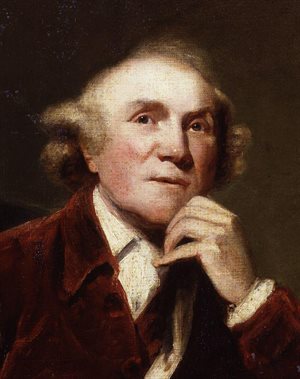 John Hunter came to London from Glasgow in 1748 at the invitation of his elder brother William, an anatomy teacher in Covent Garden. John’s flair for dissection was such that he soon joined his brother in teaching anatomy. By 1756 John Hunter was house surgeon at St George’s and in 1760 he joined the British Army as army surgeon.
John Hunter came to London from Glasgow in 1748 at the invitation of his elder brother William, an anatomy teacher in Covent Garden. John’s flair for dissection was such that he soon joined his brother in teaching anatomy. By 1756 John Hunter was house surgeon at St George’s and in 1760 he joined the British Army as army surgeon.
As army surgeon Hunter spent three years in France and Portugal, where he developed new theories on the treatment of wounds and common ailments. When he returned to London he established a private practice and began collecting a large collection of exotic animals at his home in Earls Court. In 1767 Hunter was made a fellow of the Royal Society and was invited back to St George’s Hospital once again in 1768, when he was elected surgeon.
“Don’t think, try the experiment”
Later in life Hunter established a school of anatomy at his home in Leicester Square, where students were able to lodge. One of his most illustrious students was Edward Jenner, who went on to invent the smallpox vaccine. Hunter understood the importance of research and is quoted as advising Jenner, “Don’t think, try the experiment”.
Aside from his mastery of anatomy and surgery, Hunter was a passionate collector of plant and animal specimens, which were used to establish a teaching museum. Many items relating to Hunter’s life and work can be seen at the Hunterian Museum at the Royal College of Surgeons of England.
From mechanical art to experimental science
In order to further his research and teaching, Hunter is alleged to have acquired a number of cadavers from dubious sources, and is most controversially linked to the acquisition of the body of Charles Byrne, publically known as ‘The Irish Giant’.
Nonetheless, his contribution to science and medicine is immense. It is said he found surgery as a mechanical art and left it as an experimental science. As well as his pioneering work in surgery, his deep understanding of the human body led to advances in dentistry, the treatment of venereal disease and theories around evolution.
Legacy
Hunter suffered from angina pectoris and declared, “My life is in the hands of any rascal that chooses to annoy or tease me.” In 1793 Hunter died during a meeting at St George’s Board of Governors, having a heated discussion regarding which students to admit to the hospital.
A number of Hunter’s artefacts can be viewed at St George’s, University of London, in a large display case located in the university reception area – the most notable item being the couch upon which he is said to have died. He is commemorated at St George’s in the name of one of the two wings of the university, alongside his protégé Edward Jenner.